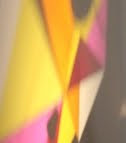finding the magical correspondences in trying to be a windmill...

nature creates similarities. one only need think of mimicry. the highest capacity for producing similarities, however, is man's. his gift of seeing resemblances is nothing other than a rudiment of the powerful compulsion in former times to become and behave like something else. perhaps there is none of his higher functions in which his mimetic faculty does not play a decisive role. this faculty has a history, however, in both the phylogenetic and the ontogenetic sense. as regards to the latter, play is for many its school. children's play is everywhere permeated by mimetic modes of behavior, and its realm is by no means limited to what one person can imitate in another. the child plays at being no only a shopkeeper or teacher but also a windmill and a train. of what use to him is this schooling of his mimetic faculty? the answer presupposes an understanding of the phylogenetic significance of the mimetic faculty. here it is not enough to think of what we understand today by the concept of similarity. as is known, the sphere of life that formerly seemed to be governed by the law of similarity was comprehensive; it ruled both microcosm and macrocosm. but these natural correspondences are given their true importance only if seen as stimulating and awakening the mimetic faculty in man. it must be borne in mind that neither mimetic powers nor mimetic objects remain the same in the course of thousands of years. rather, we must suppose that the gift of producing similarities - for example, in dances, whose oldest function this was - and therefore also the gift of recognizing them, have changed with historical development. the direction of this change seems definable as the increasing decay of the mimetic faculty. for clearly the observable world of modern man contains only minimal residues of the magical correspondences and analogies that were familiar to ancient peoples...
image, anonymous 1920's snapshot. text, excerpt from walter benjamin, on the mimetic faculty, from reflections, translated by edmund jephcott
Labels: mimicry, RPPC, walter benjamin, windmills

2 Comments:
And the obverse of this is pattern recognition, perhaps they meet in some art forms.
"Go and catch a falling star" popped into my mind when I saw the windmill and the legs sticking up.
well it seems one of them has managed to become the windmill while the other, instead of catching, might have become the 'falling star'!
Post a Comment
<< Home